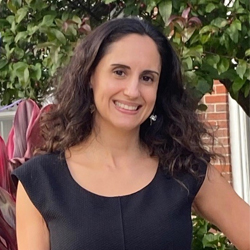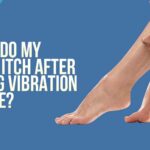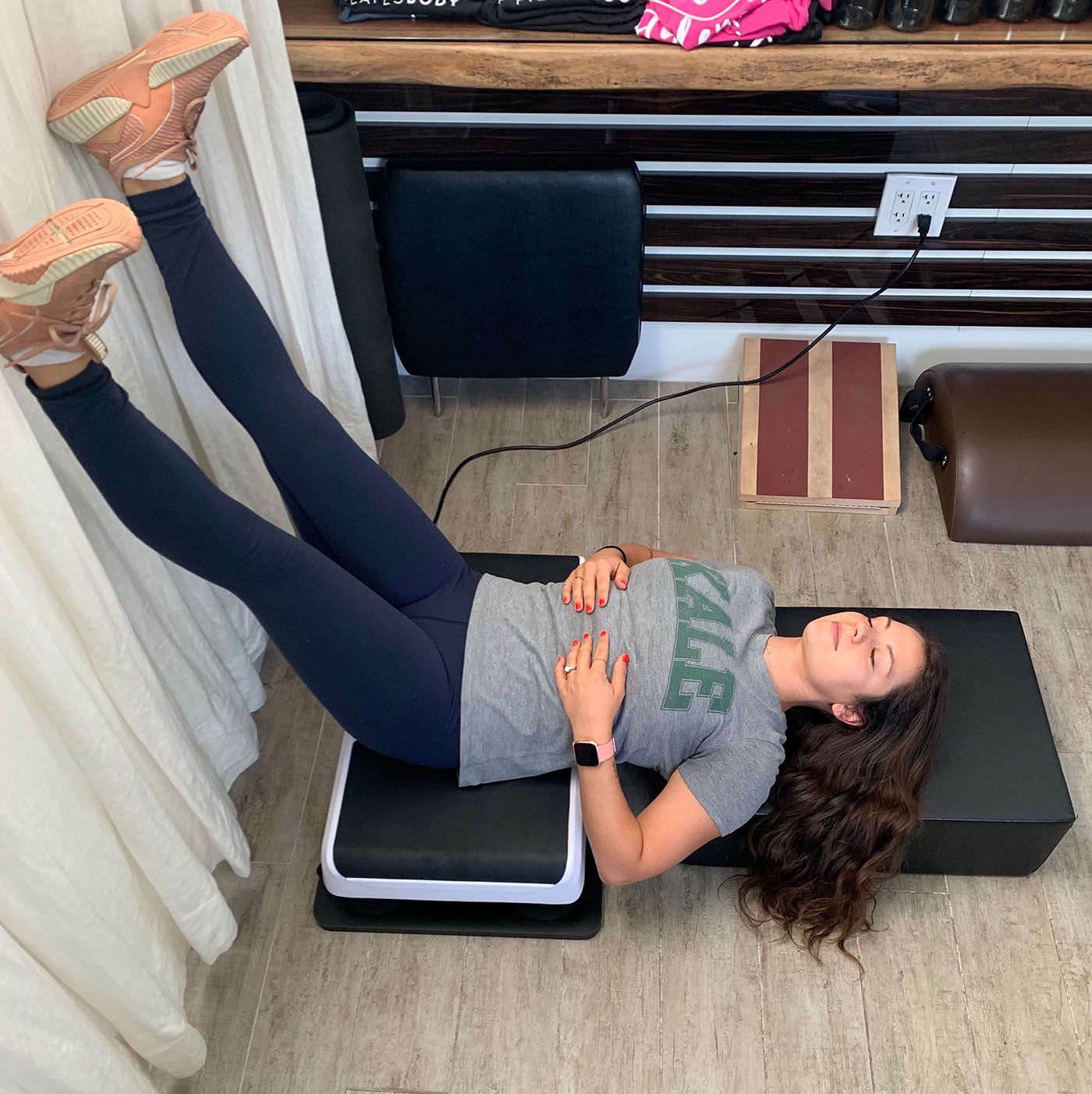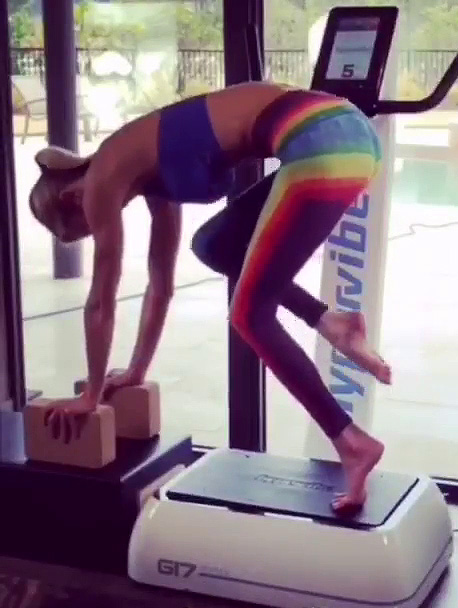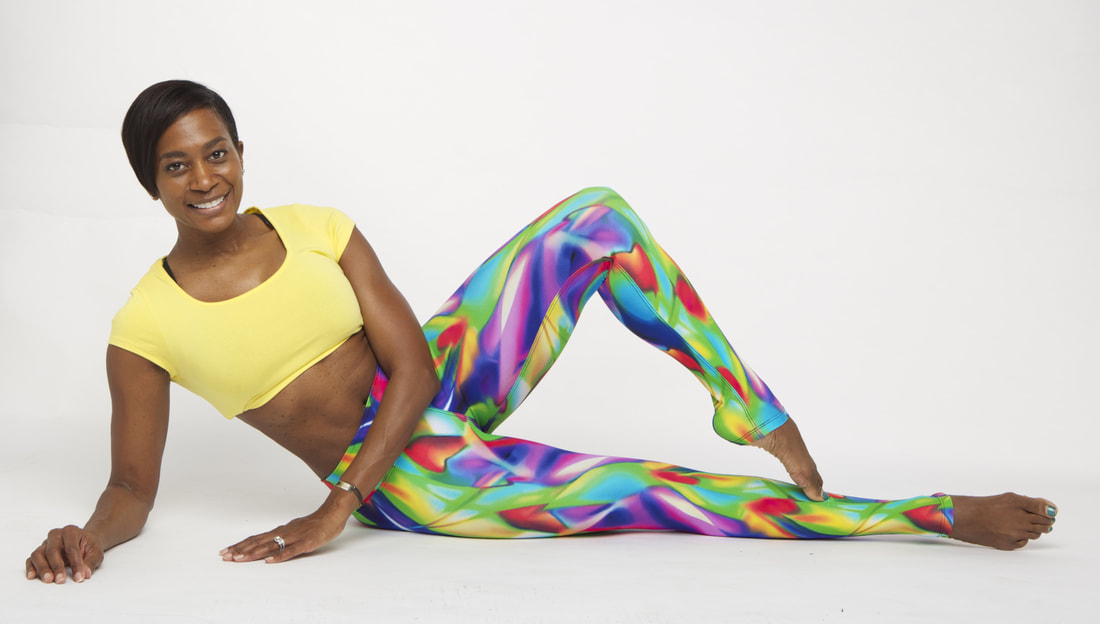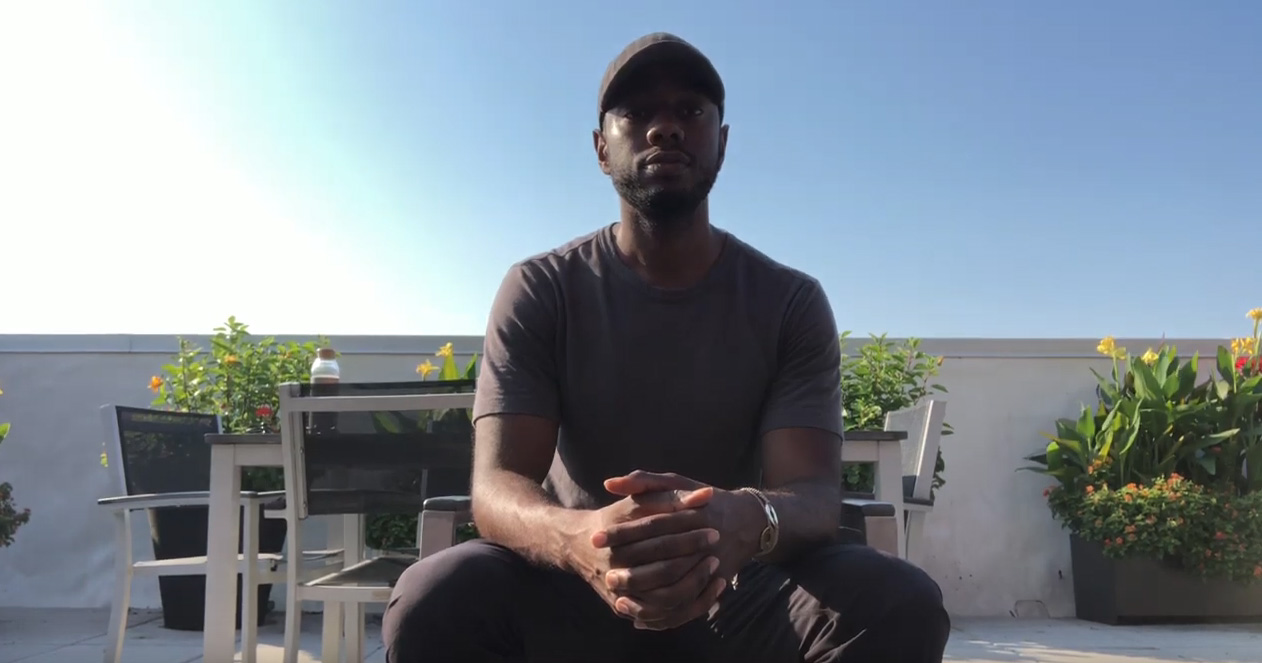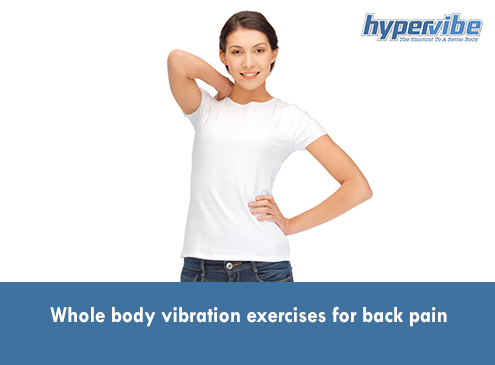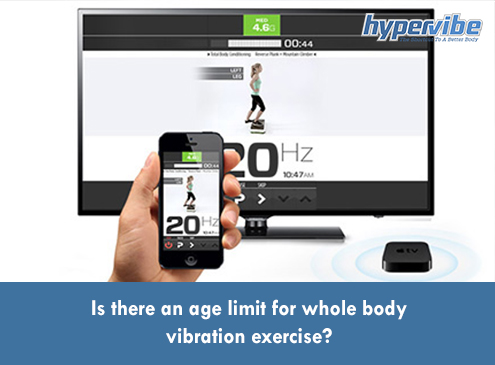Tracey Vincel is the co-founder of KIMA Center for Physiotherapy and Wellness in New York City. She is a physical therapist who has been in practice for 21 years. She and her physical therapist business partner, Patricia Ladis, along with their team of PTs, massage therapists, Pilates and Yoga instructors, practice an integrative approach to musculoskeletal health and wellness. Known for offering a wide range of unique services, KIMA represents an ideal that is unmatched in the industry. KIMA is on the cutting edge of the field, hosting forums and events that serve to educate other professionals and their clients. For more information, check out the website at https://kimawellness.com and follow KIMA on Instragram @kimawellness.
Q: Hi Tracey – thank you for taking the time out of your busy schedule to talk with me. It’s an honor to speak with you and learn more about your background and your business. You are the co-founder of the KIMA Center for Physiotherapy & Wellness along with your partner, Patricia Ladis. When was KIMA founded and how did you decide on the name?
A: KIMA was founded in 2006 in an expansive movement studio with four private treatment rooms on 23 street and 5th Avenue in New York City. Our vision was to break with the traditional models of physical therapy and to bring together the best clinicians, researchers and wellness practitioners to focus on treating the cause of pain, not just the symptoms. We wanted to help our clients see that pain in any form is actually an invitation to bring new understanding about ourselves to light.
Greek for “wave” or “fluid motion,” KIMA also stands for Kinesthetic Integrative Movement Analysis. We chose to name our practice KIMA because we wanted it to be a reflection of what we do at our physical therapy and wellness center …..we restore fluidity to the body, mind, and breath.
Q: Where did you complete your initial PT degree and in what settings did you practice prior to founding KIMA?
A: I received my Master’s Degree in Physical Therapy from The University of Maryland in 1998. I quickly realized this was not enough to prepare me for treating the “cause of pain” …so I have continued to study different approaches since graduating. I completed my Advanced Master’s Degree in Spinal Orthopaedic Physical Therapy from The University of Queensland – Brisbane, Australia in 2003 and I have also earned certificates from The Institute of Physical Art, Integrated Manual Therapy Solutions, Kinetic Control, Performance Matrix, Neuro Orthopedic Institute, Diane Lee & Associates, Gravity Fitness, Lorimer Moseley’s “Explain Pain” Training and Clinical Neurodynamics with Michael Shacklock.
Dedicating my clinical practice to treating complex chronic pain, I love traveling the world to learn and have been inspired by the healing cultures of Mexico, Egypt, Japan, China, India and Tibet. I integrate ancient and alternative healing techniques with traditional orthopedic therapy and neuroscience. In 2015, I completed a certification in Capnography from the first Master’s Program in Breathing Science through which I learned how to bridge the body and mind through breath.
Before founding KIMA, I worked in traditional NYC outpatient private practices for four years. I also worked for two years at Morgan Stanley treating their employees in a glass room overlooking time square.
Q: KIMA is not your typical private physical therapy practice. As physical therapists, how did you and Patricia come together with the vision for establishing KIMA?
A: We met in 2004 right after I had returned from University of Queensland. We immediately clicked and knew that we could build a practice together. We felt there was a need for a new approach to physical therapy – a functional and integrative approach to treating pain and dysfunction, where we address the cause as opposed to merely treating the painful structures.
This paradigm shift required an understanding of how the whole body functions and how certain problems can impact other regions of the body. It also required an understanding of how the things you feel and believe about your current experience impact your function. We knew that we would need to bring together an integrative team of clinicians, look at the best evidence based practices and stay on top of the cutting edge techniques in order to fulfill this vision.
Q: You have become a specialist in the area of Spinal Manipulation. What have you learned from your advanced training?
A: I learned a great deal while studying in the Advanced Master’s program in Spinal Orthopaedic Physical Therapy in Australia. It was a very exciting time to be at The University of Queensland. Cutting edge researchers such as Carolyn Richardson, Gwen Jull, Julie Hides, Paul Hodges, Lorimer Moseley and Bill Vincencino were all there. The focus of the research was centered around pain science and motor control. We were looking at why patients who had experienced pain before were much more likely to experience it again. One of the key factors is failure to load the postural stabilizers properly which causes them to shut down – their function doesn’t always return naturally. We learned that training needs to target specific deep antigravity muscles, that timing is important, and that exercises need to focus beyond just increasing power.
Q: I understand that you recently authored part of a book – what was the main focus of this content?
A: Yes – I contributed to the content of Introducing The Core: Demystifying the Body of an Athlete, which was published by SLACK, Inc. I co-authored a chapter along with my friend, elite sports physical therapist, Andy Barr. The physician and editor, Dr, William Meyers, who conceived of the idea for the book, asked me if I would like to contribute. I noted that they were missing a very important topic of discussion pertaining to the core – the thorax. Our chapter entitled ‘Don’t Forget the Thorax’ contains an overview of many of the misconceptions around this area of the spine. The thorax plays an integral and often overlooked role in conjunction with the lumbar and cervical core. We discuss the importance of the thorax to the overall function of the body and we give clear examples of how to assess and treat the thorax as part of an integrative system.
Q: KIMA offers some very unique services. Would you elaborate a bit on these and also explain what Capnography is?
A: At KIMA, we offer Physical Therapy Services and Wellness Services. Our PT Services include Orthopedic Manual Therapy, Women’s and Men’s Health, Spinal Specialties, Prenatal/Postpartum Care, Chronic Pain treatment, Running and Gait Analysis, Breathing Training/Capnography, Alter G Treadmill, treatment of cervicogenic headaches and TMJ Pain, Postural Analysis, Pelvic Floor Specialties, and Sports Rehabilitation.
Our Wellness Services include Annual Movement Health Assessments, Clinical Pilates, Orthopedic Massage, Mayan Abdominal Massage, Meditation/Mindfulness Training, Gravity Fit, Yoga and Nutritional Assessments.
Whole Body Vibration is a unique service that we have used at KIMA for over 11 years that we have now expanded upon since I took the Hypervibe Foundation Training course.
Capnography: Breathing is a key assessment and training objective for all patients in pain. We cannot know if someone is compromising their respiration by just looking at them – it must be measured with capnography. It is rare for a person with anxiety, stress, chronic pain, inflammatory joint disease, migraines, etc. to not be over breathing and compromising respiration. It is important that physical therapists are considering underlying dysfunctional breathing habits as sources of symptoms and not just addressing the mechanics of breathing and teaching “general breathing exercises”.
CapnoLearning® is about learning breathing behaviors that facilitate optimal respiration and their associated regulation of acid-base physiology. CapnoLearning involves the use of a capnometer (or capnograph) which provides real-time information about carbon dioxide (CO2) retention in the alveoli of the lungs for evaluating learned breathing behaviors that serve respiratory chemistry. Clients discover how they have learned to breathe, how their breathing affects them, and how to effectively self-regulate breathing behavior based on learning rather than prescriptive exercise.
Q: You have had Whole Body vibration units in your clinic for quite a while. How did you begin using whole body vibration in your practice?
A: We first started using whole body vibration in 2008 when Carolyn Richardson came to do her first course in Gravity Fitness at KIMA. With the support of her research, she was a huge advocate for using whole body vibration to increase gravitational load to the deep stabilizing muscles.
Human Bone and Joint health is deteriorating at an alarming rate – especially in the young population, in those who are sedentary, and in those active population who have tight muscles, trigger points and stress. Everyone is having to crack and stretch and move all the time. Why is this happening? Modern lifestyles do not incorporate enough exercise against the force of gravity.
Carolyn’s research tells us that when antigravity muscles are not exposed to gravitational load, they change from TONIC TO PHASIC!
½ of the body is composed of antigravity muscles and most are extensor muscles; of these, about 1/3 are local and 2/3 are stabilizers.
KEY CONCEPTS:
It’s all really all about “Axial Spinal Stability and Strength” – this protects the joints from injury and to do this we need the ‘3 Cs’ working WELL:
3 Cores – 3 muscle corset
-cervical core
-thoracic core
-lumbar core
3 Curves – 3 natural curves of the neutral spine
-cervical spine – lordotic
-thoracic spine – kyphotic
-lumbar spine – lordotic
3 Connections – 3 connections between the head, limbs and the spine
-Between head and cervical core
-Between upper limb and thoracic core
-Between lower limb and lumbar core
The role of the Gravity Fit exercise tools are to activate the three cores, develop the three curves and establish the three connections between spine and periphery.
Modern lifestyles are weakening people’s spines, leading to HUNDREDS of medical conditions related to lack of gravity.
A few examples of this include:
-Low back pain
-Shoulder and hip pain
-Osteoarthritis
-Osteoporosis
3 Key principles of the Gravity Fit Exercise Model
1. The AGB framework involves strengthening by progressively increasing axial compression load to the 3 antigravity kinetic chains (spine, upper and lower limb) while maintaining good posture and form through the 3 corsets
2. Gradually increasing the sensory exercise load, biomechanical exercise load, and endurance
3. Assessment of control and strength of progression of Effective Weight Bearing Load (EWBL)
Q: You have had Hypervibe units in your clinic for quite a while. Do you recall when and how you first came across Hypervibe?
A: We had been using whole body vibration for about four years when we were introduced to Hypervibe by our good friend and physical therapist, Gabe Ettenson. Gabe and I had worked together as clinicians in 2002. Gabe was at KIMA for that first Carolyn Richardson course and was bit by the WBV bug! Within a few years, he had sold his practice and became a representative for Hypervibe. He brought a G10 and G17 unit to KIMA and the rest is history.
Q: Since hosting the Foundation Training course, you have acquired several new Hypervibe units. How have you integrated the Hypervibe into your practice?
A: Hosting the Foundation Training Course was a great opportunity for us to collaborate with Pilates and fitness instructors from around the country who have been using the Hypervibe to develop fitness classes, and to learn hundreds of whole body vibration platform exercises. As clinicians, we often focus on the same well researched and effective exercises. Since we are focused on treating pain and our patients are weak, we have to progress them slowly. It was so much fun to get creative, to push our limits and learn so many different ways to release, stretch and strengthen using the Hypervibe. After the course, KIMA purchased two additional G10 units and moved them into the center of our fitness studio. It has been very exciting to see everyone using them – our clients and staff have all become inspired!
Q: What was the most significant thing that you learned about whole body vibration as a result of taking the training course?
A: The limitless movements that can be done on the Hypervibe. Before the course, I would have prescribed approximately 10 different exercises on the platform; since taking the course, I have expanded my catalog to over one hundred different exercises. I also realized that you really need room around the unit to explore all of its benefits. When you can move onto the platform from any direction, lie on the floor around it, lunge into it, hand plank from it, etc, the number of exercises that you can perform is limitless.
Q: How do you explain the possible effects of whole body vibration to your clients? Have they been receptive to trying it?
A: I simply explain to them that there are two factors that shut down the important postural stabilizers of the spine and joints:
1. Pain
2. Not loading them against gravity
When they assume poor postures, such as when they ‘hang’ on their hip or slump when they sit, these important anti-gravity postural stabilizers shut down. I explain to them that one of our favorite ways of waking up these muscles is to add load with whole body vibration. I enjoy explaining the research behind whole body vibration and particularly the studies that have been done with the space program and on Earth with “terrestrial astronauts” in bed rest studies. Our clients have been very receptive and whole body vibration has become an integral part of their treatment plan.
Q: You work with clients who are of average fitness as well as those who are elite athletes. Do you think that Hypervibe is equally beneficial for both?
A: Yes, I do. What is great about Hypervibe’s platforms is that they have been designed with easy settings that are easy to control. They are designed in such as way that has made it so simple to set the right combination of frequency and amplitude to generate the optimal low G forces that are initially beneficial for a patient in pain, as well as higher G forces that are needed to provide the challenge to improve strength and flexibility.
Q: What has been your favorite application of the Hypervibe for your personal routine?
A: During my day I may go from spending hours at my desk in meetings and working on projects to moving and treating patients. I have found that the perfect way to bring me into the present moment, to focus on me, to reset my nervous system, to circulate my blood and to wake up my postural stabilizers….is to stand on the G17 and look out KIMA’s enormous windows to the city around us.
Q: In terms of treating patients who have spinal conditions, especially those that are painful, learning how to properly recruit deep stabilizing spinal muscles is key. Given that you are an expert in this area, what would you advise therapists and trainers to be aware of when they integrate the Hypervibe into their training programs? Are there any specific considerations, monitoring or cueing that should be implemented for patients who have acute or chronic spinal conditions as it pertains to whole body vibration?
A: It is very important to realize that people will fatigue when using WBV. In Carolyn’s research, she has found that this can happen in as little as 1-2 minutes. This is why we not only observe our clients while on the unit but we also use the Gravity Fit Core Awareness Belt. The belt has a beeper on it and is positioned just below the navel. The patient is asked to draw in their Transversus Abdominus muscle by 15% and the belt it adjusted so that if they let the contraction go, it will beep. If they can maintain this 15% lumbar core contraction, they will not hear the beep. Once it beeps or they feel it, it is a signal to stop.
It is important for the therapist or trainer to be aware of the patient’s or client’s position and at what point the patient or client is demonstrating fatigue. If they are not able to recruit the proper muscles and maintain proper postural alignment while on the Hypervibe, this could result in the onset of pain or increased pain which may perpetuate an existing injury. It would also promote improper patterns of muscle activation, which is not useful. The applications of whole body vibration in a rehabilitative context will generally need to be more detailed. Our approach at KIMA involves a thorough postural and movement assessment that would be conducted prior to getting someone on the Hypervibe – or any other piece of training equipment.
Q: How has using the Hypervibe positively impacted your business?
A: There are two major ways in which it has impacted our business. First, Hypervibe has provided us with excellent WBV platforms that are reliable and that deliver the necessary G forces to bring about positive benefits. Second, patients fall in love with the feeling and benefits and often decide to purchase a platform to use at home. As a result, KIMA will be able to purchase more Hypervibe units in the future, which will allow us to offer WBV sessions to more clients.
Q: Getting back to KIMA, you recently hosted the Functional Forum NYC Meetup. What was the purpose of this event?
A: KIMA is the official site of the Functional Forum Manhattan Meet-Up. The Functional Forum is the world’s largest integrative medicine conference. On the first Monday of every month, this new concept in practitioner education, “medutainment”, brings together the latest health news, functional medicine research, practice development and health technology in an upbeat, entertaining way. They curate the industry’s leading innovators in a mixed-media format that combines interviews, TED-style talks, videos, audience interaction, and music, all archived for free forever on their Youtube Channel.
Q: Are there any other events coming up at KIMA for professionals or clients?
A: This summer and fall, we will be hosting a number of courses at KIMA:
June 22-23, 2019
Mobilization for the Neuroimmune System
Instructor: Luke Bongiorno, PT
July 25, 2019
Clinical Biomechanics & The Mathematical Model of Human Movement
Instructors: Paul Mitaski & Matt Sremba
September 19, 2019
The Over Head Athlete’s Evening Course
Instructor: Martin Asker, MSc, PhD-candidate
September 27-29, 2019
Myofascial Trigger Points for Movement Optimisation and Pain Including
Chinese Therapy of Jingjin
Instructor: Mark Comerford B. PHYTY, MCSP, MAPA
Oct 5-6, 2019
Hypervibe Foundation Training Course
Instructors: Rockell Williamson-Rudder, Pilates/Barre Instructor, International
Membership & Program Director, Katerina Liapis, MSPT, Director of Clinical
Education
November 16-17, 2019
Clinical Biomechanics & The Mathematical Model of Human Movement
Biomechanics of Return to Sport: Lower Extremity
Instructors: Paul Mitalski & Matt Sremba
Q: Moving forward, what is your ultimate mission at KIMA?
A: Treating ailments is only half of what KIMA is about. Maintaining wellness throughout a person’s life, even into older age, is a critical aim of KIMA’s mission. We offer our clients a KIMA Movement Health Assessment (KMA) as part of an annual movement health check up. As we move forward, we will continue to add proactive and holistic services that help people stay well, enjoy freedom of movement, and be free from pain throughout their lifetime. You’re never too young or too old to start this journey.
Q: Will you be hosting any additional Hypervibe Foundation Training courses at KIMA?
A: Yes – we will be the main Hypervibe education center in NYC. We are excited to confirm that our next training will be hosted at KIMA on Oct 5th-6th, 2019.
Thank you again for your time today, Tracey. We will continue to follow your offerings at KIMA and we are both honored and proud to have KIMA on board as one of our most respected Hypervibe Ambassadors. #teamhypervibe

